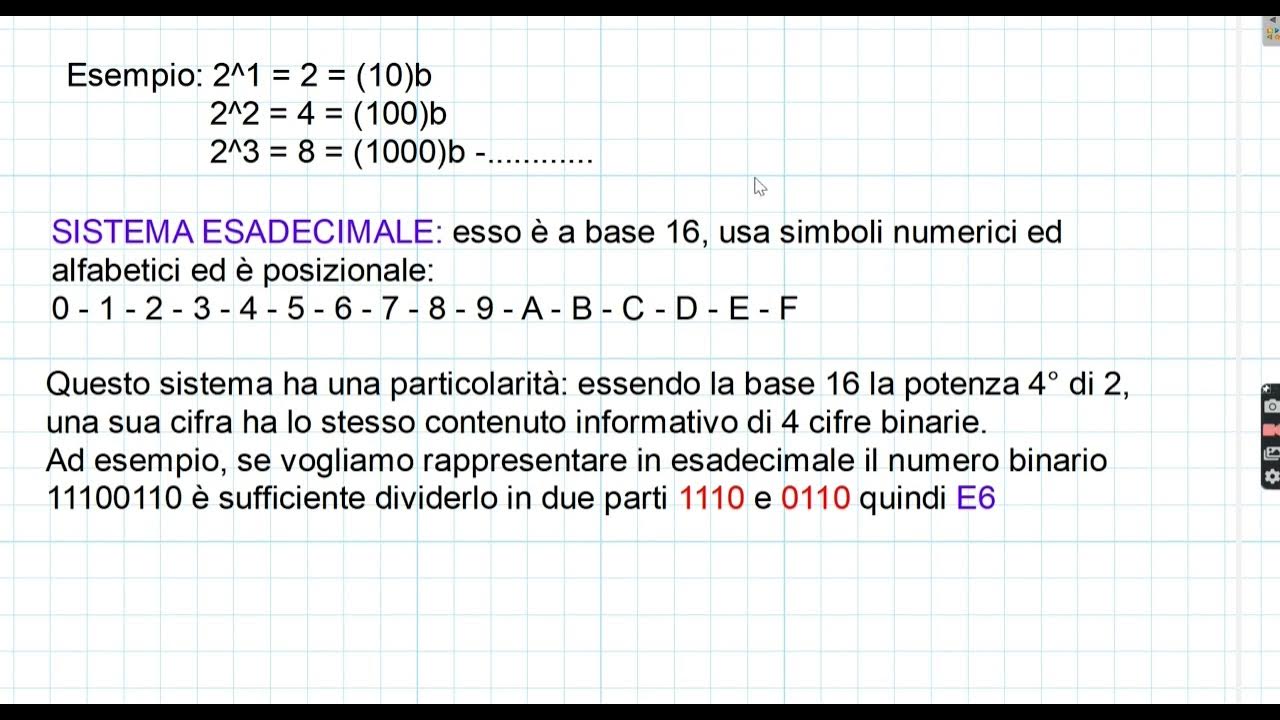Base, valor posicional e função do zero no sistema de numeração decimal
Summary
TLDRIn this lesson, we explore positional value and the role of zero in the decimal numeral system. The concept of numeral systems is introduced, focusing on base-10 (decimal) and base-2 (binary), explaining how digits' positions determine their value. Through examples like 1523 and 5123, it is shown how rearranging digits changes the number. The importance of zero is emphasized, demonstrating how it represents the absence of value and affects number interpretation. This foundational knowledge is crucial for understanding both everyday number systems and computing, where binary plays a key role.
Takeaways
- 😀 A base of a numeral system refers to the number of available digits for representing numbers.
- 😀 In base 2 (binary), only the digits 0 and 1 are used to represent numbers.
- 😀 The decimal system (base 10) uses digits 0 through 9 to construct the numbers we use daily.
- 😀 The digits used in the decimal system are based on the Indo-Arabic numeral system, which is the most common worldwide.
- 😀 The position of digits in a number is crucial in determining its value, as seen in positional numeral systems.
- 😀 A digit's position in a number indicates its order (e.g., thousands, hundreds, tens, and units).
- 😀 The number 1523 is made up of 1 thousand, 5 hundreds, 2 tens, and 3 units, demonstrating the positional value.
- 😀 Swapping the digits of a number changes its value entirely (e.g., changing 1523 to 5123).
- 😀 The value of a number can be divided into classes and orders, such as units, tens, hundreds, and thousands.
- 😀 The zero symbol in the decimal system represents the absence of a quantity and is vital for indicating empty places in numbers (e.g., 1005 means 1 thousand, 5 units).
- 😀 Zero’s position in a number is crucial for indicating the absence of values, and shifting it changes the number's meaning, such as swapping 1005 with 1050.
Q & A
What is a base system in numeration?
-A base system refers to the number of available digits used to represent numbers. For example, base 2 (binary) uses digits 0 and 1, while base 10 (decimal) uses digits 0 through 9.
What is the significance of positional value in a number?
-Positional value means that the value of a digit in a number depends on its position. For instance, in the number 1523, the '1' represents 1000 because it is in the thousands place, while the '5' represents 500 because it is in the hundreds place.
How does the order of digits affect the value of a number?
-The order of digits is crucial. Changing the position of the digits changes the value of the number. For example, swapping the digits '1' and '5' in 1523 would result in 5123, which is a completely different number.
What is the role of zero in the decimal number system?
-Zero represents the absence of a value in a specific position. It is crucial for maintaining the correct structure of numbers. For example, in 1005, zero indicates that there are no tens or hundreds.
What happens if the position of zero is changed in a number?
-Changing the position of zero can change the number significantly. For example, swapping the zero and '5' in 1005 would make the number 1050, which has a different value altogether.
What are the different classes and orders in the decimal system?
-In the decimal system, numbers are grouped into classes (units, thousands, etc.) and each class contains three orders (units, tens, hundreds). The first class is units (ones, tens, hundreds), the second is thousands (thousands, ten-thousands, hundred-thousands), and so on.
Why is it important to understand the concept of positional value?
-Understanding positional value is important because it helps us interpret and manipulate numbers correctly. It ensures that we can accurately represent values, perform calculations, and differentiate between similar numbers.
Can positional value be applied to other numeral systems besides decimal?
-Yes, positional value is a fundamental concept in other numeral systems as well, such as binary (base 2), hexadecimal (base 16), and octal (base 8), although the number of digits and their meaning will vary depending on the base.
How does the binary system work compared to the decimal system?
-The binary system is based on base 2, meaning it only uses two digits: 0 and 1. In contrast, the decimal system is based on base 10 and uses digits from 0 to 9. Despite having fewer digits, binary can represent any number by combining 0s and 1s in different positions.
What is the significance of the decimal system in modern society?
-The decimal system is the most widely used numerical system in everyday life, as it is the standard for counting, arithmetic, and data representation in many fields, including education, finance, and computing.
Outlines

This section is available to paid users only. Please upgrade to access this part.
Upgrade NowMindmap

This section is available to paid users only. Please upgrade to access this part.
Upgrade NowKeywords

This section is available to paid users only. Please upgrade to access this part.
Upgrade NowHighlights

This section is available to paid users only. Please upgrade to access this part.
Upgrade NowTranscripts

This section is available to paid users only. Please upgrade to access this part.
Upgrade Now5.0 / 5 (0 votes)





